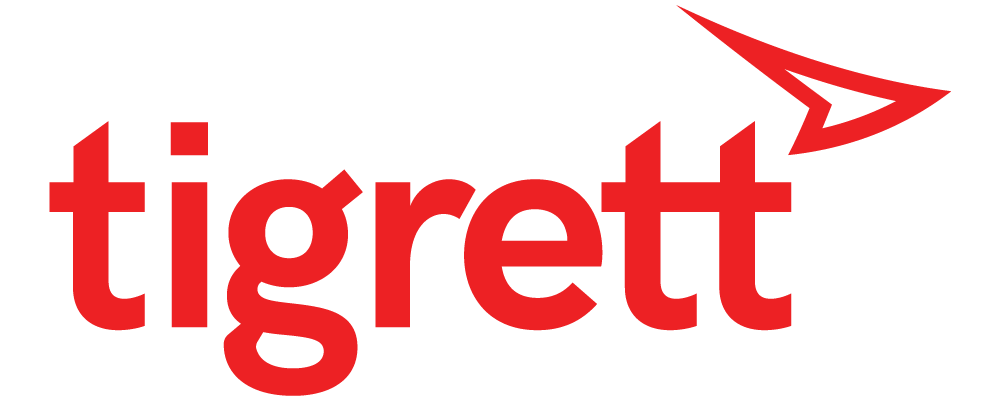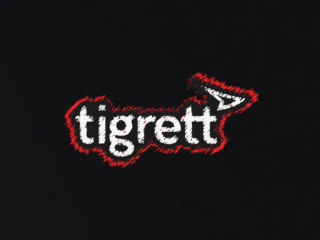The Show Must Go On: Tools That Help Us Manage Social Media So We Can Create Better Content
Everyone underestimates the amount of work it takes to execute well on social media.
Talk to anyone that does it for a living and they’ll tell you it’s a lot more work than people think. Sure there are days we spend making memes, but the truth is that social media has matured to the point where there’s a lot of work involved beyond just coming up with clever captions and gif responses. In fact, if you don’t have a plan and a system and some tools to help you manage all of it, the novelty will wear off and it will turn into a chore, or worse burn you out completely.
Take it from us, we’ve been managing social media for businesses since 2010. In the dark ages before there were any fancy tools or apps to help us schedule posts. Now with all the tools and apps in the market, it’s easier than ever to get a decent post out on social media but more challenging than ever to go viral without putting in the work (and budgets) to make that happen.
Here’s a seasoned social media manager’s list of required tools organized by category:
All-in-one tools
If you have the budget for it, spring for an all-in-one tool like Sprout Social or even Falcon (pricier, but worth it). Both of these platforms pull everything into one place for you (messages, comments, scheduling, reporting, etc.) so that you can do your daily rounds in no time and make sure that nothing is slipping through the cracks. The reporting side will make your job a lot easier, and you can even give your client(s) or boss a log-in to review and approve your posts.
Pro Tips:
- Be careful trusting the post preview on these tools since each network is constantly updating its API and interface. My rule of thumb is to have eyes on the actual posts within a few minutes of posting in case something goes wrong. Plus it helps if you immediately check on a post to give it a like, share and comment to help jumpstart it.
- The important piece that is missing from a lot of the cheap tools is that you need to be able to monitor all the comments from the ads you’re running. If the tool you’re looking at doesn’t do that for you, then you will have to figure out a manual process using a spreadsheet or something to go through and check them multiple times a day to make sure you’re not missing anything that could be harmful to your brand in the comments.
Google Alerts
Don’t forget to set up basic Google alerts for your brand. If an article comes out that mentions you or your client’s company, you’ll want to be the first to know so you can get ahead of it. Plus you can also set up alerts for interesting keywords and phrases so that you get a digest of articles and news in your inbox. Commenting on an article that’s already trending will help you ride the wave and get more organic reach. It’s much easier to repost an article with your brand’s unique perspective on it than try and come up with original content ideas all the time.
Social Listening
Almost all of the tools will say they will notify you immediately when your brand is mentioned, but what they won’t tell you is that there’s almost always a lag so make sure you are still doing a daily sweep of your brand’s name (including the misspellings) on all major social networks. This will also give you insight into what’s being said about you from real people talking to their friends and followers about their experiences with your brand. It also gives you an opportunity to jump into the conversations already happening and resolve any issues before they become unruly.
Recommended tools:
Reviews Management
If you are running a service business like a restaurant or spa, it is more important than ever to keep track of reviews and make sure you’re responding to them quickly and genuinely. Google is even factoring review responses into their algorithm now, and penalizing anyone who tries to automate, or copy and paste standard responses. To make your life easier, I’d also suggest learning what you can and cannot say in a review so you can flag and remove bad reviews.
Pro tip: Reply to all reviews (good and bad) and try working some keyword phrases, specials, or promotions into your review responses to help you start to show up for those terms as well. It’s important to keep these replies personalized, we’re talking to humans, not computers.
Google My Business
Beyond updating your holiday hours, consider Google My Business as another social media platform because it’s another place that you can post and get impressions for your brand. Everyone who finds your Google listing can see this post alongside your business information. They also stay up for about 7 days, so they’re great for longer-term promotions and sales. You can also find a lot of useful insights within your GMB dashboard as well as reply to reviews, and update your service offerings.
Morning Rounds
Every morning before you spend time writing, editing or publishing content, make sure to browse the headlines and check Twitter, Instagram, and Facebook to see what’s trending. Obviously, if there’s something newsworthy happening, it’s extremely important to pause or rethink your brand posts so that you don’t come across as automated, insensitive or tone-deaf towards the conversations already happening in the feeds.
Ads Manager
Facebook’s ads manager is a necessary evil. It’s one of the most frustrating platforms that exist so it really pays to have access to Facebook business chat. If you don’t have a rep to email or talk to over the phone, we would suggest making that one of your top priorities. There’s nothing worse than seeing the campaign you spend weeks on “under review” after you just published it. Keep an eye on your pixel event data, and how your campaigns are performing all within FB Ads Manager.
Conversion Tracking
If you are looking for higher quality traffic, one of the best ways is to optimize for conversions. In order to do so, you will need to tell Facebook what to recognize as a “conversion” such as sales, form fills, or email sign-ups. Simply download Facebook’s pixel helper extension on Chrome.
Pro tip: any good Facebook marketer will admit to you that Facebook’s algorithm almost always outperforms our best guesses as to what audience(s) to target. So much so that it’s often better to just trust it to do its thing than to try and come up with the targeting for an ad, for example.
Email Notifications
Email is old school but it’s a surprisingly helpful tool for managing social media. Once you figure out how to turn off all the annoying emails you get and take the time to customize which ones you really need to see in your inbox, it’s a lot easier to keep up with comments and reviews.
Pro tip: ask your IT administrator to set up an email address just for social media, especially if you don’t have a customer service team. Plus you can use this new email for all of your social logins and notifications. Then when you finally take that vacation, the hand-off will be easier.
Protip: tools like zapier or ifttt. will help pull in the notifications you need into slack or whatsapp.
Link Shorteners
If you don’t have an analytics tool, just use a simple link tracker like Bit.ly so you can see the week or month at a glance and attribute posts and ads to increased website traffic. If you’re looking for more in-depth analytics, get up to speed on Google Analytics and UTM parameters.
No code landing page builders
Nowadays you don’t need a developer to build a website or landing page. Most of the popular website builders are WYSIWYG meaning “what you see is what you get” so you can easily move things around by clicking and dragging or copy and pasting elements from one page to another.
Pro tip: I’d recommend working with a designer to help you establish some brand style guide elements (fonts, colors, type sizes/spacing) before you dive in and try to make one from scratch.
Pro tip:
While landing page builders can get the job done, consider them a band-aid solution. We fully recommend utilizing a professional designer and web developer to keep a consistent look and feel across your site as well as matching your tone of voice within your copy.
Design Tools
Everyone on social media has short attention spans which is why it’s important to continually update and change out your graphics even if your messaging generally stays the same. While nothing beats the old-fashioned skilled designer utilizing powerful tools such as Photoshop and Illustrator, not everyone is a skilled designer or has a design team at their fingertips to help produce content. These are some great tools to elevate your posts visually while also saving you time.
Pro tip: go back in the feed and create new variations of your best performing posts and ads.
Stock photo sites
Your followers are savvy enough to recognize stock imagery but sometimes you can’t help it because your dipping into the same folder of photos the client sent 3 years ago. So what now? There are plenty of places to get unique stock photos. While we would always recommend you hire a photographer or schedule a shoot with your agency, sometimes it’s easiest to just swipe a few free stock images from one of these sites below.
Pro Tip: Elevate your stock photography by color grading them to match your brand’s visual style. You can also apply a gradient or a colored gradient map over top of the image it’ll help it stand out better than just using a regular image.
Editorial calendar
While there are a million tools for editorial calendars, we prefer to use Notion as our go-to content planner. It’s useful for quickly filling calendars for multiple clients and then it can be easily exported as a PDF to whatever presentation platform you use for feedback and approvals. Even better, you can invite your clients or agency (if you’re client-side) into your Notion pages so they can make updates themselves, easily sign off on posts, and swipe images and captions.
- Google docs / sheets / presentation
- Notion
- Sprout/Falcon
- Slack
Pro Tip: create a calendar with repeating annual events for relevant holidays and national days and simply layer it over your editorial calendar and duplicate whatever day you want to mention.
Password Manager
Anyone who manages social media knows how much of a pain it is to secure and manage all of the logins and credentials for their clients. We’ve tried everything, but nothing works quite as well as using a password manager, especially if you can set different permissions for users.
- Last pass
- 1Password
Content Planning & Research
Let’s face it, on social media, you’re in constant competition with not only your clients and competing businesses but you’re also competing for attention against the biggest brands in the world. Keep a pulse on what is happening and what strategies and tactics are being used in your space (and others) so that you can make sure you’re keeping up with the best of them.
- Google Trends
- Buzzsumo
- SpyFu
- Facebook Ad Library (or Page Transparency)
Reporting
You’re more than your last piece of content. Social media is about consistency. Even when one of your posts does go viral, there’s often a frustrating dip afterwards that makes you nervous heading into the reporting period. The good news is that there are some tools that make it easy to showcase your wins and tell a story around the numbers that will help you get approval faster.
- Flaunt — simple screenshot reporting chrome extension that works into your workflow
- Sprout Social’s report builder is one of our favorites. Easy to customize and automate.
- Google Analytics and Data Studio — GDS is easily one of the most powerful and customizable options. The amount of customization can be a daunting task to begin with but in the end worth it.
Group Text or WhatsApp Group
The last thing we’d recommend is creating a simple group chat, text, or email thread with all of your colleagues, freelancers and friends who can help support and distribute your content. Make sure to message them within a few minutes of posting and ask them to jump on a post and like / comment/share right away to help with the algorithm’s “edge rank” cut through the clutter.
If you made it this far, congratulations. We hope you got a lot out of this article. We have a lot of respect for people in your position and we know how important it is to handle all these details so you can focus on coming up with that next great content piece.
Social media managers are expected to be strategists, copywriters, editors, designers, photographers, video/podcast editors, search engine wizards, google ad word specialists, growth hackers, developers, email whizzs, marketing automation specialists, customer and tech support reps, community builders, brand positioning experts, systems engineers, and public relations image consultants, and, of course, meme makers. Sure you can catch a wave sometimes but making something “go viral” secretly takes a lot of time and energy. The strategy and planning aspect is often overlooked, but once you go through the process of creating content that’s both on-brand and somehow still relevant, then strategically time and target it to the right audience to elicit the right emotion, you’ll start to really appreciate the good content that you see that much more.
To bring it home, when social media first came out, ‘the socials’ were usually given to the new intern or a nephew of the owner. Now social media extends into almost every aspect of business including marketing, of course, but also sales, customer service, public relations, and hiring. While it’s usually B2C or direct-to-consumer brands that we think of when we imagine what a good social media presence is, we’re beginning to see that B2B brands are embracing the power of social media because we’d like to think that after the year we had, we’re all starting to recognize that, at the end of the day, we’re all human.
If there’s anything to take away from this article, it’s there are a lot of tools that can make your life a heck of a lot easier, which let’s you focus on what’s important — your message and the value you bring to your customers.



